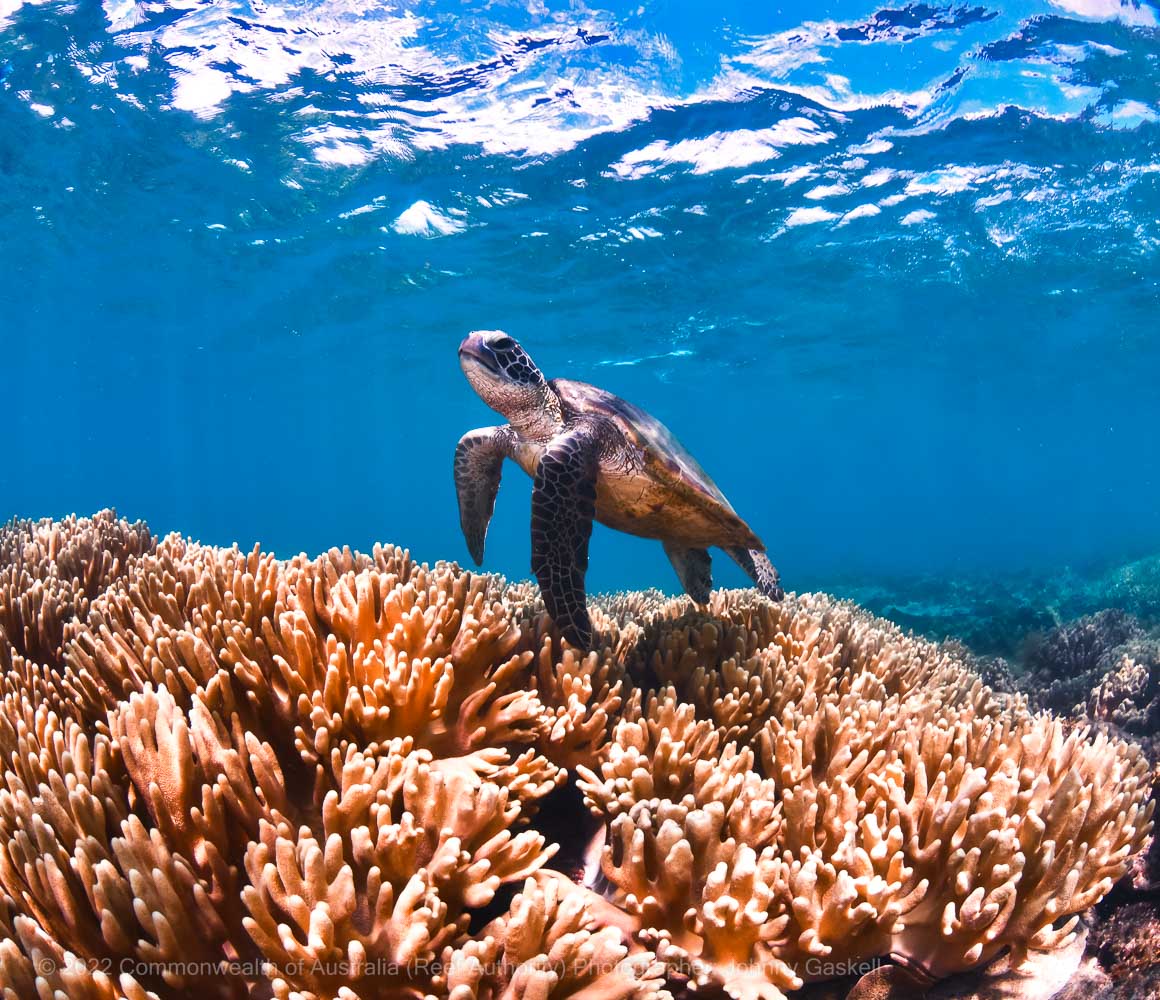While Africa boasts the Big Five, the Great Barrier Reef has the Great 8. A selection of some of the Reef's most iconic and favourite inhabitants, which feature at the top of visitors lists of wildlife to encounter. The Great 8 reflect the diversity and beauty of the World Heritage Listed Marine Park. From reptiles to mammals, small to large, these key species of the Reef can be found in various locations throughout the Marine Park.
Check out our extensive list of High Standard Tourism Operators to encounter the Great 8 for yourself on the Great Barrier Reef.
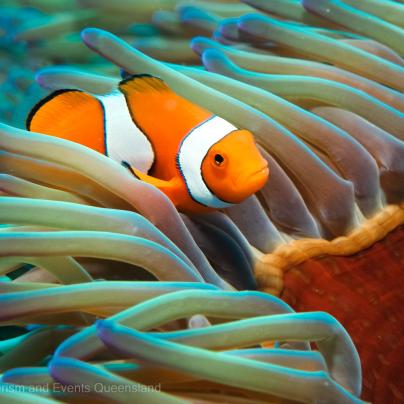
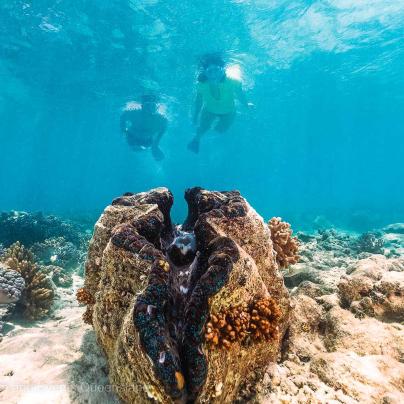
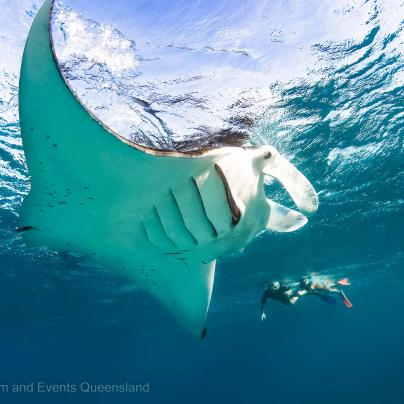
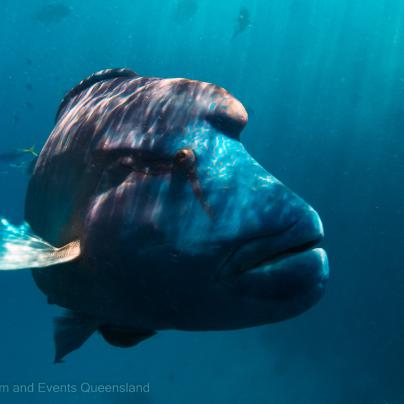




The Great Barrier Reef is home to 1,625 fish species, and none are more famous than the Clown (Anemone) fish. Claiming celebrity status after the release of Finding Nemo, these Hollywood super-stars can be found living in a symbiotic relationship with their Anemone hosts. These fish develop immunity to the stinger tentacles of their Anemone home which provides them protection, while the fish return the favour by removing parasites and sediment from the host. There are around 11 different species of Anemone fish on the Reef, which can be found from the Southern Bunker Group of reefs to the tip of Cape York, and everywhere in between. These fish not only hold key intrinsic value for guest experience on the Reef, but are also a key indicator species of Reef health through our Eye on the Reef monitoring system.
Giant clams (Tridacna gigas) are the largest mollusc on earth. Growing well over a meter in length, and weighing over 200 kilograms, these clams can live for over 100 years. Clams are filter feeders and have bivalves which draw water into their body and filter out micro-organisms using gill structures. Like coral, this species also has a symbiotic algae (zooxanthellae) living in its tissue which provides extra nutrients by photosynthesising with available sunlight.
The manta ray is the largest of all rays, growing to over 7 meters across for oceanic mantas, and up to 5 meters for reef mantas, the later being the most commonly encountered on the Great Barrier Reef. Like whale sharks, manta rays feed on on small fish and plankton in tide and current lines, usually along the ocean surface, making them easy to spot while boating in the Marine Park. The large cephalic flaps on either side of the head are used to direct planktonic food into the mouth. Manta rays have no stinging bard, and are completely harmless to humans.
When diving or snorkeling with manta rays, allow them to approach you, and avoiding chasing after them.
The Maori Wrasse – also known as the Humphead Wrasse, is the largest of the 600 odd wrasse species worldwide. These iconic inhabitants of the Reef are easily identified by their blue and green 'Maori' patterns, thick lips and inquisitive nature. Starting life as a female, these wrasse can change sex based on social and environmental factors. Many High Standard Tourism Operators possess fish feeding permits, which often attracts resident Maori wrasse to their dive and snorkel sites. Like anemonefish, these wrasse are also key indicator species for our Eye on the Reef survey methods.
Getting their name from distinct potato shaped markings, the potato cod is one of the largest of the cod, or grouper, species. Despite their size, the potato cod is harmless to divers, and can be found at many High Standard Tourism Operators dive sites. The potato cod’s cousin, the Queensland grouper, or giant grouper, is the largest bony fish found on the Reef, known to grow to more than 2m long and weigh up to 400kg.
Like the lions of the African savannah, sharks play a pivotal role in the Reef's ecosystem as one of the top predators. By removing the sick and injured, and moderating booming populations of other species, the majority of sharks are considered completely harmless to humans. With around 50 species of sharks found on the Reef, from the small bottom dwelling epaulette sharks, to the giant migratory whale shark, they are truly one of the most memorable and incredible encounters to be had on the Reef.
Of the world's seven species of sea turtle, six can be found in the Great Barrier Reef. The three most common, being the green, loggerhead and hawksbill, can be found on all reefs throughout the Marine Park. The sea turtles truly are the dinosaurs of the Reef, with earliest fossils dating over 120 million years old. Feeding mainly on seagrasses and algae, various turtle species are also known to feed on crustaceans and jellyfish.
From October to March, sea turtles mate, and lay their eggs on the beach and continental islands of the Marine Park. After incubation of 6-8 weeks, up to 150 hatchlings can be seen on their dash to the waters edge. Of every thousand turtles hatched, it's estimated only one turtle will reach adulthood, with the rest being made an easy meal for sea birds, crabs, fish, sharks and rays.
Whales are one of the most incredible encounters the Great Barrier Reef has to offer. Whether it's the acrobatic displays of the humpback whale, or swimming with a minke whale, these gentle giants are heavily protected in the Marine Park.
Once hunted to near extinction, the humpback whale population of Australia is making a strong recovery since the ban on whaling was introduced in the late seventies. It is estimated their population increases by around 10% each year. From May to September, these whales migrate from the Antarctic to the tropical Queensland waters to mate, birth and socialise. These iconic visitors can grow up to 18 meters in length, and are best known for their incredible acrobatic displays and curious nature.
Minke whales are regular reef visitors, but little is known of their migration path through the Great Barrier Reef. Recent research suggests the Ribbon Reefs, north of Cairns, are an important area for these creatures, particularly around May-July when individuals are regularly encountered by dive vessels in the area. While not exhibiting as spectacular displays as the humpback whales, minkes often exhibit a great deal of curiosity around boats and divers, making them a popular animal with the fortunate few who meet them in the wild.
